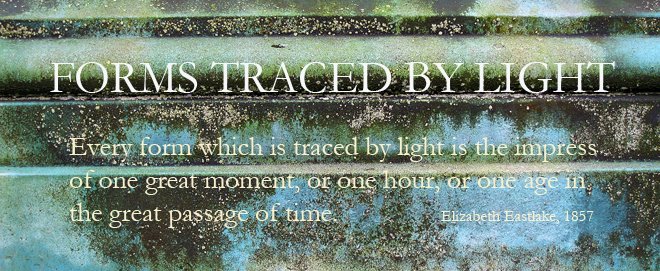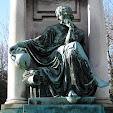
Portraiture and self-portraiture - we looked at a large number of images in class today, from Disderi's cartes de visite (and various other anonymous, untraceable old images that I dragged off my favorite source for these things, eBay - I particularly liked the tintype of two African-American women in their Sunday best swinging in a studio hammock) to Catherine Opie's Pervert and Jen Smith's 2007 - what would one call it? reply? - Citizen.
We'd been talking about Barthes' self-consciousness about being photographed, and at one point I sent everyone off to take photographs of each other - not so much to see what photographs they produced, but to think about what it meant to be photographed - to compose oneself, to put on a mask, to goof at the camera, or whatever. One student came over to photograph me (though I saw at least one other person doing so in a more surreptitious manner: how did that feel? I played along with being natural...). But with a camera pointed at me - I inevitably fell into the instant trap of producing a smile - a tired looking smile, it transpired, but a perfectly acceptable professional mask. Postage stamp sized, it looked like a wonderfully flattering shot: normal size - well, let's say that I could have done with more time to pose, more time to think about it, more... Nonetheless, it produced something to work with for a self-portrait today, for, as I pointed out, someone else can well press the shutter when it comes to one's production of a self-portrait. So thank you, Shane.
One of the questions that we were asking was what does a (self) portrait require in order to be a portrait? What if someone is shot from behind? What of the series of images that Carrie Levy shot of people naked in their homes - but with their faces hidden, turned to the wall or the floor or buried in their arms? Does a portrait need a face? - something asked by Axel Antas's White Portrait, in which his head has disappeared in fog or cloud or air. And - the point behind Bill Armstrong's Infinity series - how much detail does a face need to be a recognizable portrait? So I took Shane's picture of me (originally in black and white), and cropped it down, and applied Gaussian Blur to the point that I could still find the image very recognizable (radius 32.8 pixels, for the technically minded). But would anyone else? And what might it mean that I've chosen to tint it a very, very faint dark blue? And am I depressed, or not, to find that I look much, much better - much more like an ideal version of myself - when I'm on the verge of illegibility?


No comments:
Post a Comment